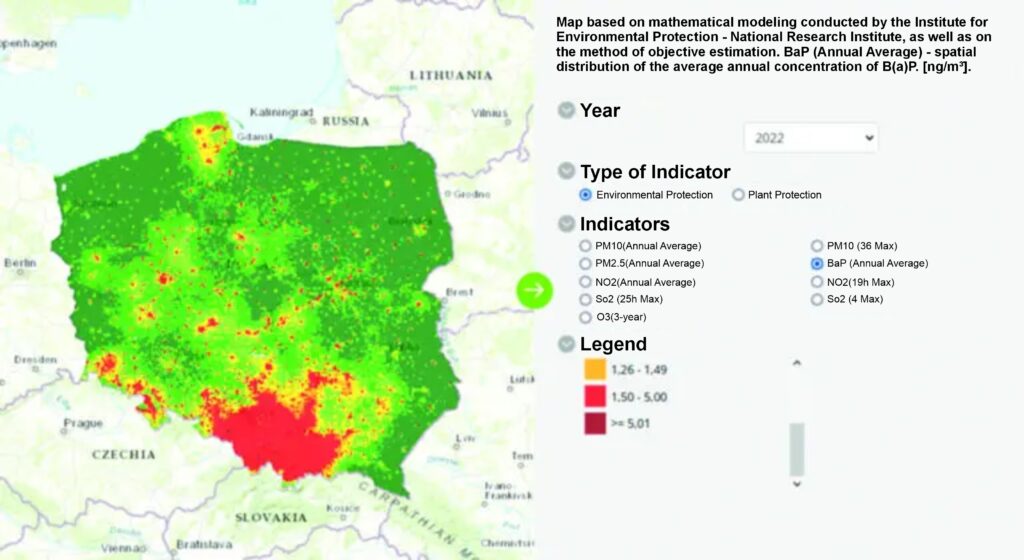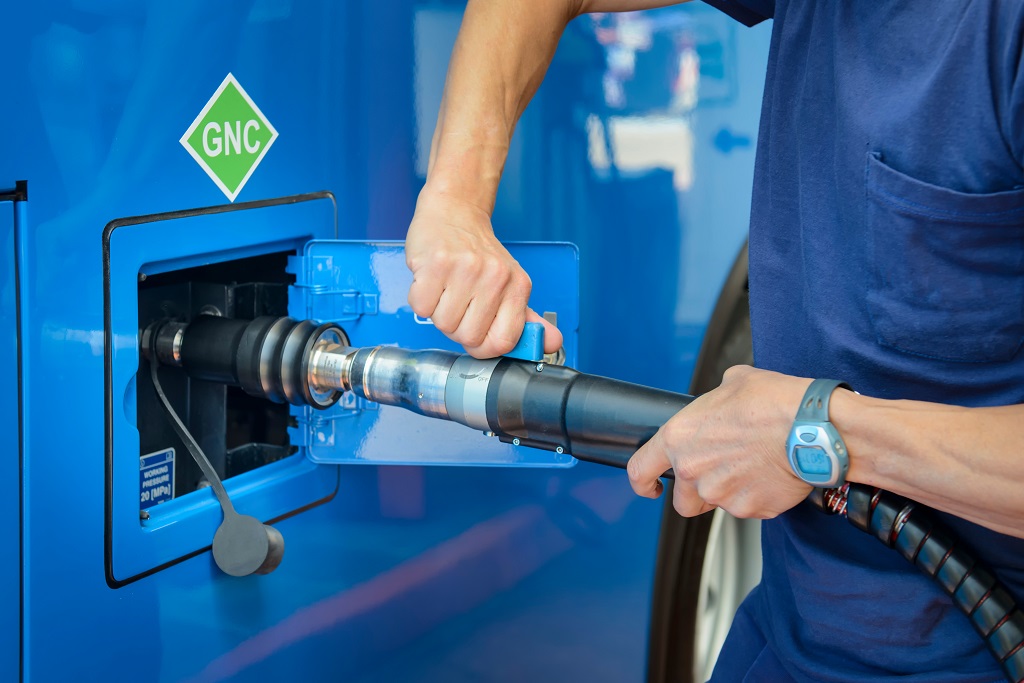Can Poland use natural gas in automotive applications?
The 21st century began with the anticipated, or according to some, already observed greenhouse effect and worsening air pollution. The transport sector significantly contributes to these changes, primarily due to the emission of exhaust gases. However, in recent years, this has changed significantly. Thanks to advanced catalysts, efficient engines, start-stop systems, and additives for exhaust treatment such as AdBlue, cars emit significantly fewer exhaust gases and associated pollutants than they did just 10 years ago. Nevertheless, harmful substances for living organisms, especially in the exhaust of older vehicles, still exist in relatively high concentrations:
carbon monoxide (CO), hydrocarbons (HC) and their derivatives, often interchangeably referred to as volatile organic compounds (VOC), nitrogen oxides, sulfur oxides (oxide, dioxide, trioxide), lead and its compounds, soot, fumes, ashes, metals, other solid substances, heavy organic compounds in liquid form, partially interchangeably referred to as particulate matter PM.
Among substances harmless directly to the health of living organisms or occurring in exhaust gases in small concentrations are those harmful to the environment. They particularly contribute to the occurrence of the greenhouse effect in the atmosphere. These mainly include:
- carbon dioxide (CO2),
- methane (CH4),
- ammonia (NH3).

Pic. 1. https://powietrze.gios.gov.pl
To counteract the deterioration of air quality, the European Union is adopting increasingly stringent requirements regarding the cleanliness of car exhaust emissions. It’s enough to mention the Euro series standards, among which the latest edition – Euro 6d, introduced from 2021, obliges car manufacturers to ensure that the average carbon dioxide (CO2) emissions in their model range available in the European Union do not exceed 95 g/km. Slightly different values apply to brands offering smaller, mainly urban cars, and slightly higher values for those selling larger and heavier cars. It is important to note that for vehicles with diesel engines, the permissible emission of nitrogen oxides has been significantly reduced.
The need to comply with regulations in force in the European Union and concerns about air cleanliness, especially in city centers, led the Ministry of Climate and Environment to amend the law on electromobility and alternative fuels. It includes, among other things, the creation of clean transport zones in Poland. The first of these will be launched by mid-2024 in Warsaw and Krakow. Entry to the clean transport zones will be allowed for cars:
- electric,
- hydrogen-powered,
- natural gas-powered,
- exempted based on a municipal council resolution.
As a result, cars with diesel engines, as well as gasoline and LPG cars, will not be allowed to enter.
On the horizon is a group of several million owners of passenger and delivery vehicles equipped with engines that are several years old or older. These vehicles do not meet the requirements of Euro 4 and are increasingly unwelcome in large cities. In light of this, are we condemned to scrapping millions of passenger cars? I don’t think so. The only chance for their continued use is to switch to more environmentally friendly fuel. It can be a 50/50 solution, meaning vehicles with diesel engines are adapted to run on two fuels: diesel and natural gas in a 50%/50% proportion. This solution does not completely eliminate pollutants from exhaust emissions but significantly reduces them, allowing the continued use of existing fleets for several more years.

Pic. 2. www.pixabay.com
What can we do to drive more affordably and ecologically?
Methane as an Alternative to Petroleum Fuels
Internal combustion engines powered by petroleum fuels have dominated the automotive world for nearly 150 years. Current indications suggest that further improving engines for more efficient fuel combustion and cleaner emissions will become increasingly challenging and costly. This complexity involves advanced engine equipment, such as increasing fuel injection pressure (around 15 MPa for gasoline engines and 200 MPa for diesel engines), adjusting air intake, catalytic and filtering systems for exhaust gases, all interconnected with sophisticated computerized control. The detected falsification of emission quality analysis in Volkswagen vehicles in the United States is likely a signal that realistic improvements to internal combustion engines have reached their limits.
Since traditional internal combustion engines are reaching the end of their development, and mass adoption of electric cars is still a few years away, the question arises: what about the transitional period? The answer that comes to mind is natural gas.
Advantages of Natural Gas
Among the advantages of compressed natural gas (CNG), we can mention that:
It is environmentally friendly – significant reduction in pollutants emitted in exhaust gases, including:
-
- Solid particles PM 2.5 and PM 10 (so-called soot),
- Sulfur oxides (SOx),
- Nitrogen oxides (NOx),
- Carbon monoxide (CO).
- Noise reduction by several decibels due to high octane number – equivalent to approximately 130.
- Transportation of gas to refueling stations is possible through traditional gas pipelines, eliminating the need for fuel delivery by tankers (no pollution associated with transportation).
- Safety – the ability to park in garages and underground parking lots. CNG, being lighter than air, quickly dissipates into the atmosphere in case of a leak, for example, during an accident. When mixed with air, it forms non-flammable concentrations. The ignition temperature is higher than that of gasoline and diesel.
- No need for DPF/FAP filters (AdBlue) in vehicles – simpler construction and potential lower risk of costly engine and accessory failures.
- The possibility of refueling the car from a low-pressure home gas network using CNG compressors.
Will CNG remain one of the main sources of fuel in the long run? I do not know, as strategic decisions have already been made within the EU. However, from an economic and ecological standpoint, it is certainly worth considering methane gasification for the millions of vehicles currently on our roads. In the second part, I would like to delve into the Polish realities associated with CNG and explore the opinions of Polish drivers on this matter.
Author: Dr. Adam Górniak – long-time manager in the automotive industry, trainer, and consultant
- https://www.gov.pl/web/klimat/kolejny-etap-prac-nad-nowelizacja-ustawy-o-zmianie-ustawy-o-elektromobilnosci-i-paliwach-alternatywnych
- The Act of January 11, 2018, on electromobility and alternative fuels (Journal of Laws of 2021, item 110, as amended https://isap.sejm.gov.pl/isap.nsf/DocDetails.xsp?id=WDU20210000110
- Górniak: Utilization of selected means and methods of acquiring and processing data for the purposes of anticipatory quality planning, taking into account customer needs, as a component of production preparedness in the context of a chosen industry. Doctoral dissertation. Zabrze 2019.
- Przegląd Gazowniczy nr 2, 2017
- https://powietrze.gios.gov.pl
- https://www.wnp.pl/gazownictwo
- cng.auto.pl
- http://autocng.pl/
- https://www.autodna.pl/blog/co-to-jest-norma-euro-6


